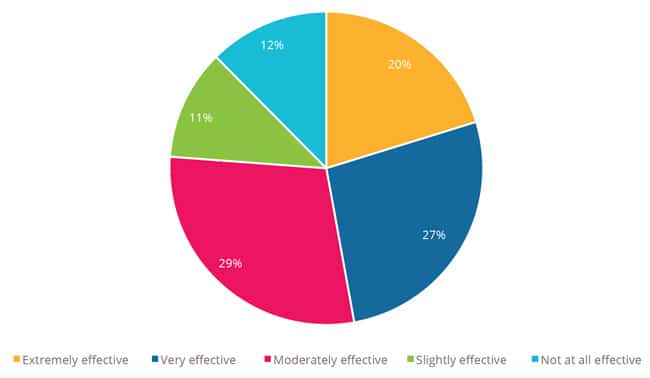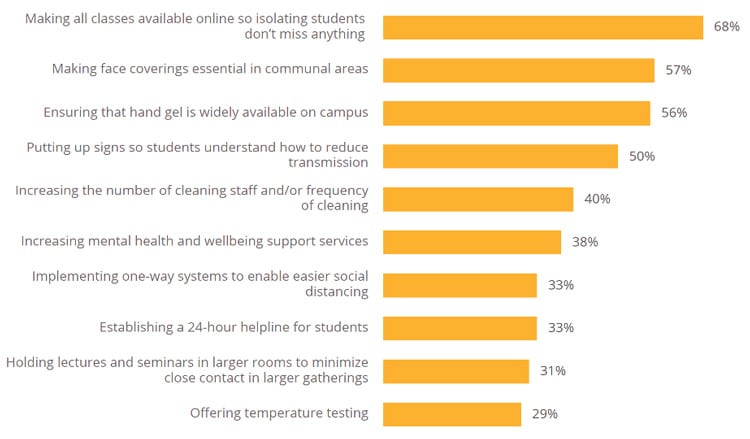Best practices in crisis communications during COVID-19
- The best crisis communications strategy begins before the crisis occurs, and relies on communicating regularly and empathetically with all stakeholders, including students, so that a foundation of trust and transparency can be built
- Institutions’ safety precautions around COVID-19 will be closely scrutinised on students’ social media, especially if an outbreak occurs
Chances are, if your campus is open now or will open sometime in the next several months, one or more students may test positive with COVID-19 at some point. It’s a sobering prospect, but with numbers of COVID-19 cases rising in most places, it may be inevitable for many institutions and schools. The key will be in assuming that an outbreak could happen, rather than hoping that it won’t occur. In other words, now – even if your institution or school hasn’t yet had a positive case – is the time to be planning for crisis communications.
The key is to get out in front of the problem before it happens. That means communicating regularly and empathetically with all stakeholders, including students, so that a foundation of trust and transparency can be built. Such a foundation is crucial if your institution wants to establish the following conditions:
- A calm and prepared student community in place in advance of any outbreak.
- Students who have read and listened to expert, scientific guidance about what to do to in order to reduce the likelihood of contracting the virus and also to lower the likelihood of spreading it if they do get it. Once an outbreak is underway, adrenaline will be high and students will need to refresh themselves on crisis protocols, but these will not all be new and therefore they will be less overwhelming and students will be less likely to panic.
- Students accustomed to regular, well-considered, and caring communications from your staff.
- Students who trust and feel loyal to your institution, who will therefore less likely to spread rumours or heighten panic among their families – an incredibly important consideration for institutions with international students. One international student’s bad experience can easily travel a long way in their home communities, as worried parents and friends spread the news to others in their networks.
Writing in the Harvard Business Review, communications expert Paul Argenti says that perfect is the enemy of good when it comes to crisis communications:
“Even if you’re still trying to understand the extent of the problem, be honest and open to maintain credibility. Approach the situation with empathy. Put yourself in your constituents’ shoes to understand their anxiety. You will sometimes get it right, and you will often get it wrong, but it is still better to be as transparent as you can.”
Even for larger institutions or schools, Mr Argenti recommends that crisis communications teams be small – no more than five to seven people, with representatives from the leadership team, corporate communications, HR, and an expert in the area of concern (i.e., a medical expert well versed in COVID-19). This team, says Mr Argenti, should:
- “Meet regularly to monitor the situation closely as it continues to evolve.
- Be the main source of information about the crisis.
- Give regular updates.
- Be as transparent as possible. Explain what you know, what you don’t know, and your sources of information.
- Be succinct. Long turgid messages written by health professionals or lawyers will not be read or easily understood.”
The key is to ensure that whomever is communicating to students and parents is doing so calmly, proactively, knowledgeably, and transparently.
If and when an outbreak does occur, be prepared. Most governments now have guidance prepared for schools and universities operating during the pandemic, for example the CDC’s guidelines in the United States, and equivalent briefs in Canada, the UK, Australia, and New Zealand.
Recognise the impact of social media
Bailey and Brooklyn McKnight are twin sisters and students at Baylor University in Texas. Both contracted COVID-19 in August, shortly after returning to campus. The twins’ positive cases offer an interesting example of:
- How quickly the reputation of a university can be affected by how it handles an outbreak;
- How helpful it can be to connect with students who are social media influencers during this time;
- How generally important it is to be using smart social media strategies during the pandemic.
The McKnight twins – who also happen to be YouTube stars with millions of followers – had already been engaged in a contract with Baylor University before the pandemic to post content about the university on their social media channels. Jason Cook, vice president of marketing and communications and chief marketing officer at the university, explained the function of the twins in Baylor’s promotional strategies:
“Brooklyn and Bailey have helped introduce Baylor University to an entirely new generation of prospective students who may have never heard of the university previously. With Gen Z, these students need to see themselves through others, and Brooklyn and Bailey provide glimpses into college life each and every week.”
When they contracted COVID-19, the twins immediately told their followers that they had not contracted the illness during in-person classes, and they stated that Baylor had “taken every precaution, including mandating masks, requiring students to test negative before coming back to school, and many, many more precautions.”
Evidently, Baylor University is benefiting from having created a relationship with social media influencers before COVID-19. Millions of the McKnights’ followers are now aware of the university’s careful approach to safeguarding students from COVID-19.
But whether or not your institution has incorporated influencers into marketing, it is key to recognise that students will readily (and persistently) share their views on your COVID response via social channels. This is all the more reason to ensure that you are creating the safest possible environment for students, communicating well with all stakeholders (and especially students and families), responding quickly to student concerns, and strengthening support services.
Room for improvement?
A QS survey conducted throughout September of newly enrolled and continuing international students in higher education found that on a global level, students feel that many institutions could be doing more to respond to COVID-19. The survey gathered responses from just over 3,000 students from a wide range of sending countries.
Roughly half (47%) said that their institutions had been highly or very effective in responding to the pandemic. But slightly more (53%) rated that response as “moderately effective” or worse.

Current students were asked what their university is doing to limit the spread of the coronavirus on campus, and surprisingly, only 57% said that their institution is making face coverings essential in communal areas and only 56% said that hand gel is widely available on campus. Other important measures were still less frequently in place according to students:
- Increasing the number of cleaning staff and/or frequency of cleaning (40%)
- Increasing mental health and wellbeing support services (38%)
- Staggering class timetables to limit the number of people in communal areas (25%)
- Offering free COVID-19 testing for anyone displaying symptoms (21%).

The coronavirus is the first global public health event of this scale in the age of social media. Reputations – of agencies, institutions, or even entire study destinations – have been, and will be, heavily influenced by student and parent perceptions of the response to the pandemic. Effective crisis communications has an important role to play in that response, and, in particular, in supporting students, families, and partners in the coming months.
For additional background, please see:
- “ICEF Exchange podcast: How mental health services are adapting to support students during COVID-19"
- “ICEF Exchange podcast: Australia’s response to student safety and welfare and support during COVID-19"
- "COVID-19: Social media engagement is up and so is interest in learning online”
- “How and when international students use school websites and social media in planning for study abroad”
















